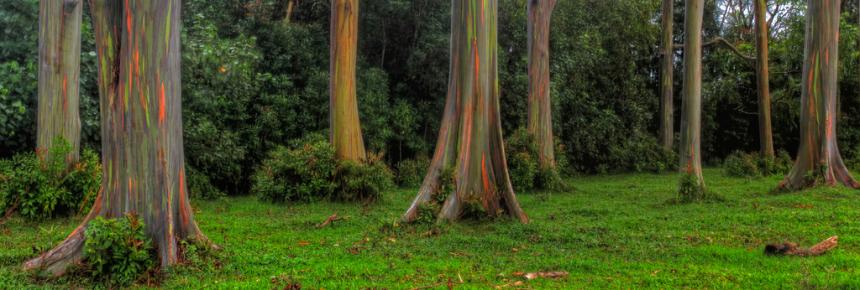
Getting to Know the Rainbow Eucalyptus
The rainbow eucalyptus is a very charming tree. All those colors and the distinct fragrance - the plant is indeed unforgettable to many. However, just like all other plants out there, this one is not perfect for all environments.
If you've been planning to get a rainbow eucalyptus, there are a few things you need to know. Rainbow eucalyptus, also known as E. deglupta in the world of science, is the only tree that is native to the northern hemisphere. It can be found in tropical forests that enjoy a lot of rainfall. In its native environment, it can grow as high as 250 feet.
The rainbow eucalyptus grows in frost-free areas of Hawaii, as well as in the southern portions of Florida, California, and Texas. It works within the 10+ US Department of Agriculture hardiness zones. In continental areas of the country, the tree's maximum height is only around 125 feet. While this is just around half of its maximum native height, it is still pretty much a gigantic rainbowtree.
Besides climate, rainbow eucalyptus have other requirements to grow, such as a huge amount of sun and soil moisture. When solidly rooted, the tree can grow by three feet every season on its own - meaning without fertilizers - but it does need consistent watering when there is inadequate rainfall.
A rainbow eucalyptus' tree's most distinctive feature is its bark, which peels off at the end of each season to show a new and vibrant bark underneath. This process is responsible for the lines of red, blue, gray, orange, and green. The colors of a rainbow eucalyptus in its native environment are always more intense, but nonetheless, any rainbow eucalyptus is always one of the most stunningly colorful trees you can have.
So is a rainbow eucalyptus E. deglupta worth growing in your area? If you're in a frost-free zone and you get a good amount of rainfall, maybe it is. The question is if you can grow it in your yard.
Yes, rainbow eucalyptus is a humongous tree, but if you have enough space, it can be a beautiful addition to your landscape. But note that if your area is not big enough, raised roots can damage your house' foundation and even pavements. Just research how to plant it and care for it. Of course, it is best planted in large areas like parks where it can provide a nice shade. If ever you need data on how to plant eucalyptus plants, access the site at http://www.ehow.com/how_5098866_plant-eucalyptus-trees.html for guidelines about it.